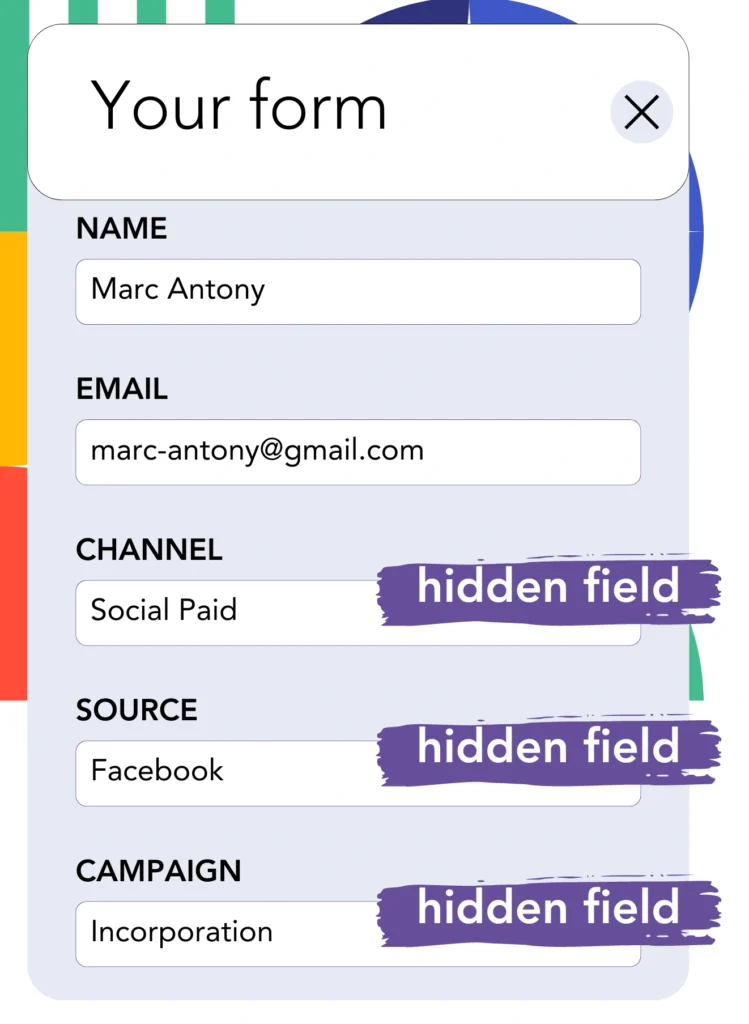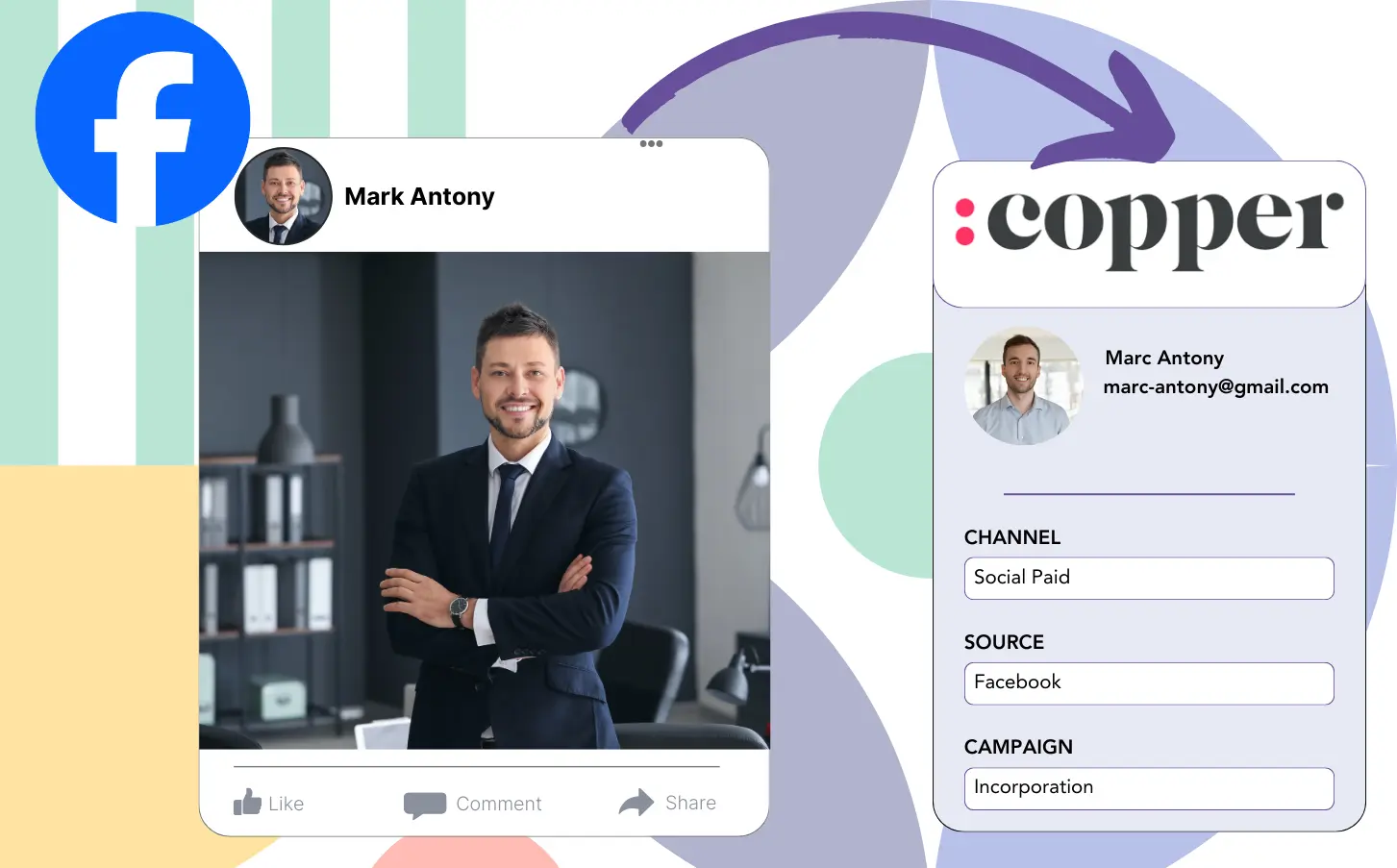Though you run lead generation ads on Facebook and direct your leads to Copper CRM, there’s no clear way to track which specific ad generated each lead, leaving you unsure of which ad resulted in the sale when the lead turns into a customer.
The lack of data holds you back from making improvements to your Facebook ads, forcing you to invest in several ads at once while remaining unaware of which one is actually bringing in the revenue.
By connecting each lead to the specific Facebook ad, including its campaign, ad set, audience, and ad, Leadsource provides the solution to this problem.
This article explains how to properly attribute each lead to the corresponding Facebook ad, including its campaign, ad set, and audience.
Let’s dive into this!
Capture Facebook ads in Copper CRM
Step 1: Add Leadsources in the head tag of your website

Sign up to Leadsources.io, and benefit from our 14-day free trial.
Add the Leadsources tracking code in the head tag of your site – follow this easy step-by-step guide.
Step 2: Add the UTM parameters to your Facebook ads campaigns

Enter the UTM parameters you’d like to monitor in your Facebook campaigns.
For example, the campaign, ad set, audience, and ad can be tracked using these UTM parameters:
- UTM_source=facebook
- UTM_campaign=campaign-name
- UTM_term=ad-set-name
- UTM_content=ad-name
Leadsources records all lead source details, like channel, landing page, and subfolder, even if UTM parameters are not present, providing thorough insight at the lead level.
Step 3: Add the hidden fields in your form

To allow Leadsources to save lead source data, hidden fields should be created in the form on your landing page.
When a lead fills out your form, Leadsources automatically inserts the Facebook ads data into the hidden fields.
To finish the setup, refer to our thorough guide on how to include hidden fields in your form.
Step 4: Capture the Facebook ads data in Copper CRM

When someone clicks your Facebook ads and reaches your page, Leadsources automatically captures the Facebook ads data, including campaign, ad, ad set, and audience.
Leadsources takes care of automatically populating the hidden fields in your form with Facebook ads data.
After the form submission, you can automatically transfer the Facebook ads data and your leads to Copper CRM. Just connect your form to Copper CRM to do this.
How does Leadsources work?
Every time a visitor lands on your site, the Leadsources tracking code collects Facebook ads data, like campaign, ad set, audience, and ad if it’s included in the head tag.
After capture, the Facebook ads data resides in the hidden fields of your form. It can then be forwarded to your Copper CRM with the lead.
Leadsources captures the following details from visitors:
- Channel
- Source
- Campaign
- Content
- Term
- Landing page
- Landing page subfolder
This lead source data is tracked by Leadsources even if UTM parameters are not present.
In specific cases, you might find that UTM parameters are unavailable:
- Google Search
- Instagram bio link
- Social media posts
- Etc.
This situation is problematic for most lead source tracking tools, as they depend on UTM parameters for lead source data. However, Leadsources manages to track some lead source data regardless of UTM parameter usage:
- Channel
- Source
- Landing page
- Landing page subfolder
For this reason, Leadsources allows for lead data tracking across every channel, unlike most other tools:
- Organic Search
- Paid Search
- Organic Social
- Paid Social
- Referral
- Affiliate
- Display Advertising
- Direct Traffic
Automatically, Leadsources classifies your traffic by channel, providing you with a well-structured dataset.
With Leadsources, robust lead source tracking can be built across all channels in a unified location.
How to run performance reports
With the integration of Facebook ads data into Copper CRM, you have the ability to create various performance reports, such as:
- Leads by channel
- Leads by campaign
- Leads by ad set
- Leads by audience
- Leads by ad
- Leads by landing page
- Leads by landing page subfolder
This aids you in assessing and refining your Facebook ads budget more accurately.
Now, let’s discuss the different types of reports available for you to create.
Lead performance reports
These reports highlight the lead generation volume attributed to:
- Channel
- Campaign
- Ad set
- Audience
- Ad
- Landing page
- Landing page subfolder
Example #1
Pull data from different channels, such as SEO, PPC, and email, to create a report labeled “Leads by Channel.”

Example #2
When you find out which channel is most effective, like Facebook ads, you can focus on it to evaluate the lead numbers from all campaigns.

Example #3
After identifying the top campaign for leads, you can see which audience, ad set, or ad is generating those results.

Sales performance report
Knowing which ads and keywords bring in the most leads is beneficial, yet do they also enhance your revenue?
Sending form data to Copper CRM makes it easier to generate thorough sales performance reports.
Example:
| Channels | Search Paid | Social Paid |
| Leads | 50 | 75 |
| Sales | 5 | 6 |
| Average order value | $150 | $100 |
| Revenue | $750 | $600 |
After assessing how your Google and Facebook ads performed, you identified that Social Paid ads resulted in a greater number of leads than Search Paid ads.
Following weeks of assessment, you observe that the Search Paid channel achieved more revenue with a smaller number of leads than the Social Paid channel, encouraging you to increase the budget for Search Paid campaigns.
LeadSources tracks the source of each lead in Copper CRM, whether they come from ads, organic search, social, email, etc. and syncs that data with each submission. See the full breakdown on the lead source in Copper CRM page.

